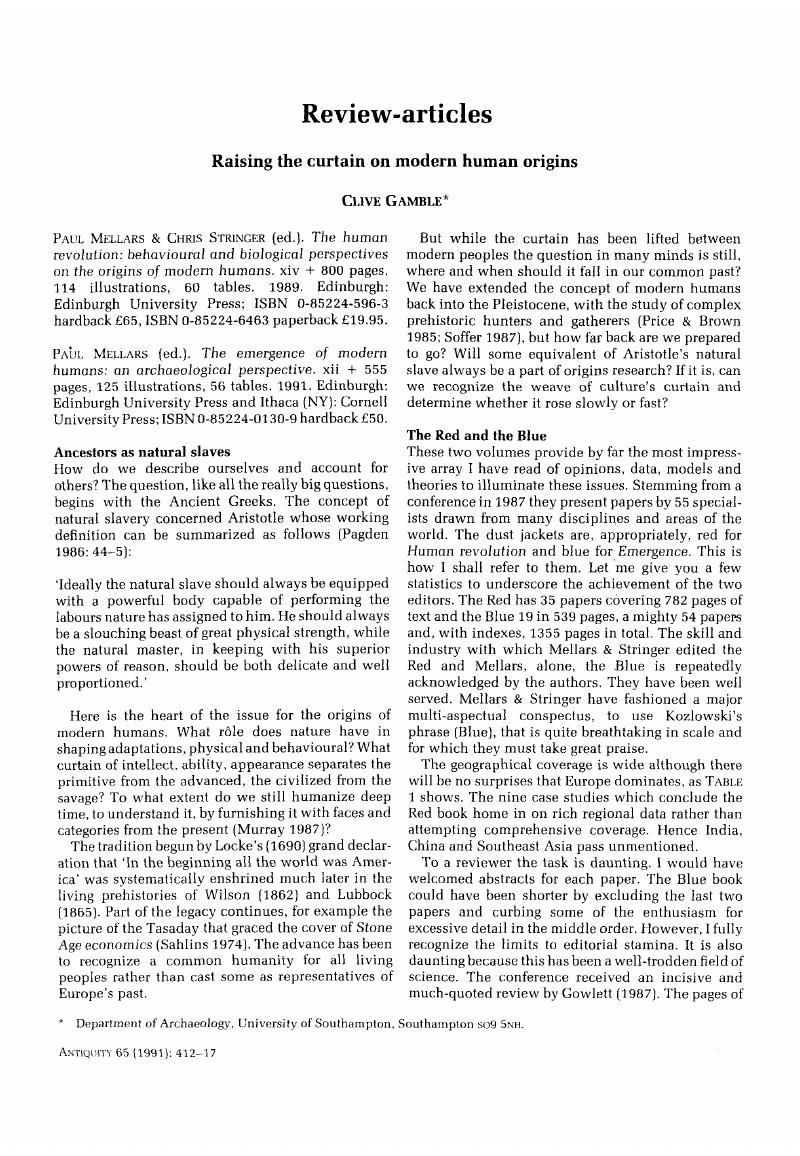Crossref Citations
This article has been cited by the following publications. This list is generated based on data provided by Crossref.
Lee, Phyllis C.
1991.
Biology and Behaviour in Human Evolution.
Cambridge Archaeological Journal,
Vol. 1,
Issue. 2,
p.
207.
1994.
In Search of the Neanderthals: Solving the Puzzle of Human Origins.
Cambridge Archaeological Journal,
Vol. 4,
Issue. 1,
p.
95.
Gamble, Clive
1998.
Palaeolithic society and the release from proximity: A network approach to intimate relations.
World Archaeology,
Vol. 29,
Issue. 3,
p.
426.





